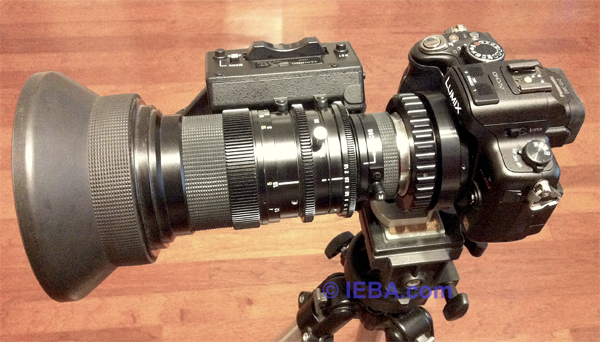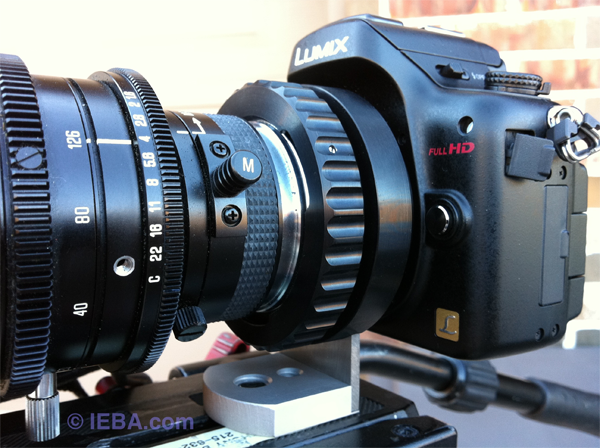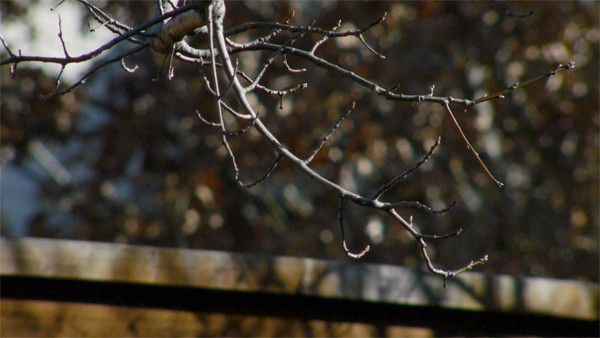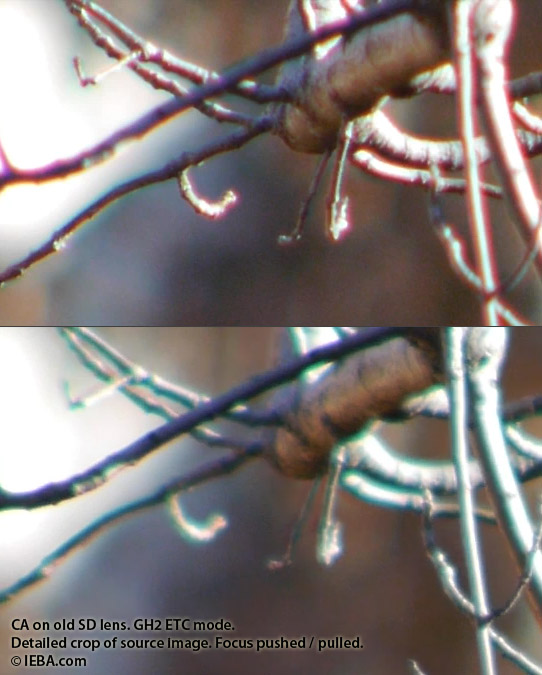Adapting Servo Zoom Lenses for Smooth-Zooming DSLR Production, Part 1
DSLRs have become the standard by which current and future large-sensor camcorders are judged. But as we adopted DSLRs and primes to produce more "filmic" video for our clients, we left something critical behind: the feathery smooth servo zoom that serves feature film producers so well. So how do you get that capability on your DSLR?
Selecting a B4 Adapter
I chose a passive adapter because the cost was only a few hundred dollars, as opposed to several thousand, and because I knew that GH2 could make use of the lens' circle of light by enabling the ETC mode.
There are lots of adapters from a lot of companies out there, many from China, some from the US, and even Europe is represented. I found a few good reviews, and some believable examples and went with a B4 to M4/3 adapter from Ciecio7 on Ebay. I found this adapter to be quite solid and worthy of my trust.
The adapter itself is a very solid piece of gear. The Ciecio7 and other adapters can come without a mount for a tripod, but I would avoid that at all costs unless you have a complete rail system to both hold and support the weight of the lens and the camera body. You do not want to put all the weight of the lens, and the torque of moving it around, on the camera lens mount. The mount can bend. and when it does, you're done. You'll never get back to perfect because the micro-tolerances would be near impossible to match. There is a very good reason big still photography lenses come with their own mount: because the camera body can only hold so much. A small still lens is fine. A large still or video lens is not.
I chose a version of the Ciecio7 lens mount that has a built in 1/4-20 and 3/8" tripod mount on the bottom. The camera ends up being this light little thing that hangs off the back. Honestly, the camera's weight is nearly inconsequential to the weight of the total system. Here are some photos of my camera/lens system:

GH2, Ciecio7 adapter, and B4 lens

Another, closer view of the Ciecio7 B4 adapter for Micro 4/3 lens. Here you can clearly see the foot built into the adapter.
With this adapter, I was able to connect my Tamron lens to the DSLR. Enabling the ETC mode provides a full-frame HD image.

The Tamron lens on the GH2. Nice bokeh. Low CA at f5.6.
When I deliberately overexpose the image, the bright highlights make chromatic aberration much more visible. In this case, as the lens focuses in front of or behind the very bright areas, I get different colors. I pulled two detailed captures to highlight what this looks like so you can understand what it is when you see it.

As the focus changes, overexposed highlight areas clearly demonstrate chromatic aberration.
You couldn't possibly compare the Tamron to what the CA looks like on the Panasonic Micro 4/3 lens because the GH2 performs in-camera correction for image distortions, portholing (dark corners), and all kinds of chromatic aberration. All the Micro 4/3 cameras do this for all the M 4/3 lenses. This makes them look far more perfect than they actually are. With old still lenses, and these video lenses, there is no in-camera correction and you get exactly what the glass gives.
In general, these lenses provide better images than the raw output of the still lens. This old Tamron lens is okay. It's worth the $50 I spent. It was made for a much lower-resolution tube camera, and it was made nearly 30 years ago. Today's technologies, glass manufacturing, and tolerances are much better so using a new HD lens would provide dramatically better images, but it would also be much more expensive. Choose the quality/price level you are comfortable with.
Related Articles
Adapting servo zoom ENG lenses to your DSLR rig with suitable rails and power makes for a smooth transition from prosumer camcorder to large-sensor video camera.